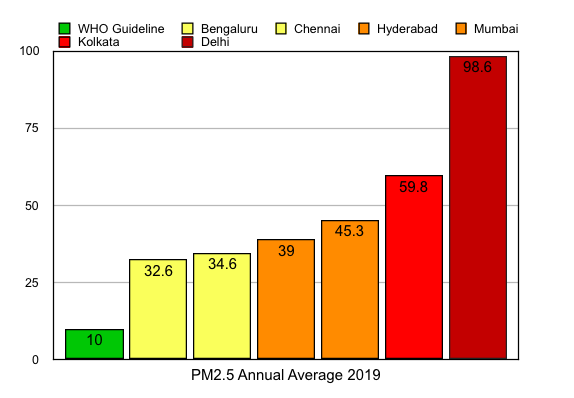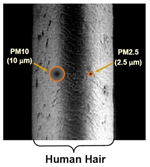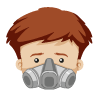Air Quality Index – AQI
The Air Quality Index is an index which shows air quality in a single number.
AQI shows 6 air quality colour-coded ranges which are associated with different health impacts.
Air Pollution is of two types: Outdoor & Indoor Air Pollution
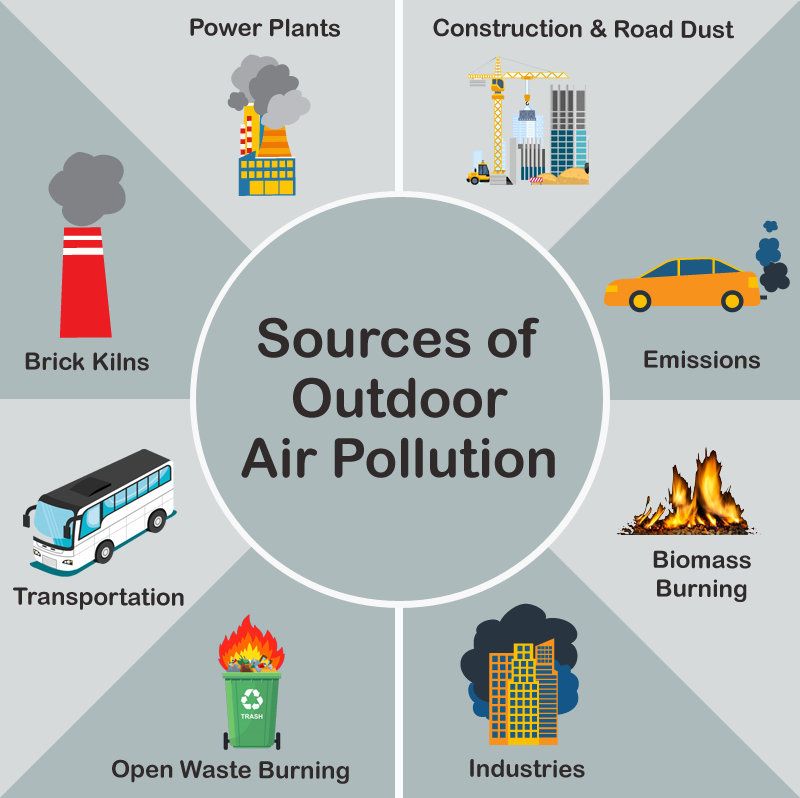
Outdoor Air Pollution
Outdoor air pollution is also known as Ambient air pollution. This pollution is caused by emissions from cars, trucks, industries, construction sites, and many more activities. These emitted pollutants are harmful to our health. Out of all pollutants, fine particulate matter is most harmful. Majority of the fine particulate matter comes from the burning of coal, diesel and petrol by vehicles, power plants, industries and biomass burning.
Common Outdoor Air Pollutants:
Particulate matter
- PM10: Particles with 1o micron diameter. Majorly contains dust particles which can pass through nose, throat & enter lungs.
- PM2.5: Particles with 2.5 micron or less diameter. These particles enter deep into our lungs & bloodstream.
Gaseous
- Sulphur Dioxide (SO2): This gas is colourless and has strong odour. It is formed from the burning of coal, petrol, diesel, etc.
- Nitrogen Oxide (NO2): It is formed by burning of coal, petrol, diesel and natural gas. NOx combines with SO2 to form acid rain.
- Carbon Monoxide (CO): It is produced during incomplete burning of coal, petrol, diesel, wood & natural gas.
- Ozone (O3): Ground level ozone is harmful to our health. It is emitted by cars, chemical plants & power plants, etc.
- Volatile Organic Compounds (VOCs): VOCs are produced from burning of petrol, diesel and coal. VOCs are also released from glues, dry cleaning products, etc.
Indoor Air Pollution
Indoor air pollution is also known as Household air pollution. It means contamination of air inside houses, buildings and work areas. Chulhas, dust & smoke contribute to household air pollution. Indoor air pollution is equally, if not more harmful than outdoor air pollution.
Common Indoor Air Pollutants:
- Particulate matter: Biggest contributor is outside air. Other indoor sources may include heaters, chulhas, burning of wood, etc.
- Tobacco: Smoking and second-hand tobacco contributes to indoor air pollution and it also raises risk for cancer and heart attacks.
- Chulhas: Smoke from burning wood, cow-dung and crop waste for cooking is very harmful as it leads to respiratory diseases and lung infections.
- Dust: Fine particles of dust can enter our nose, throat and lungs which can be harmful for our health. Dust also acts as a carrier for bacteria and viruses.
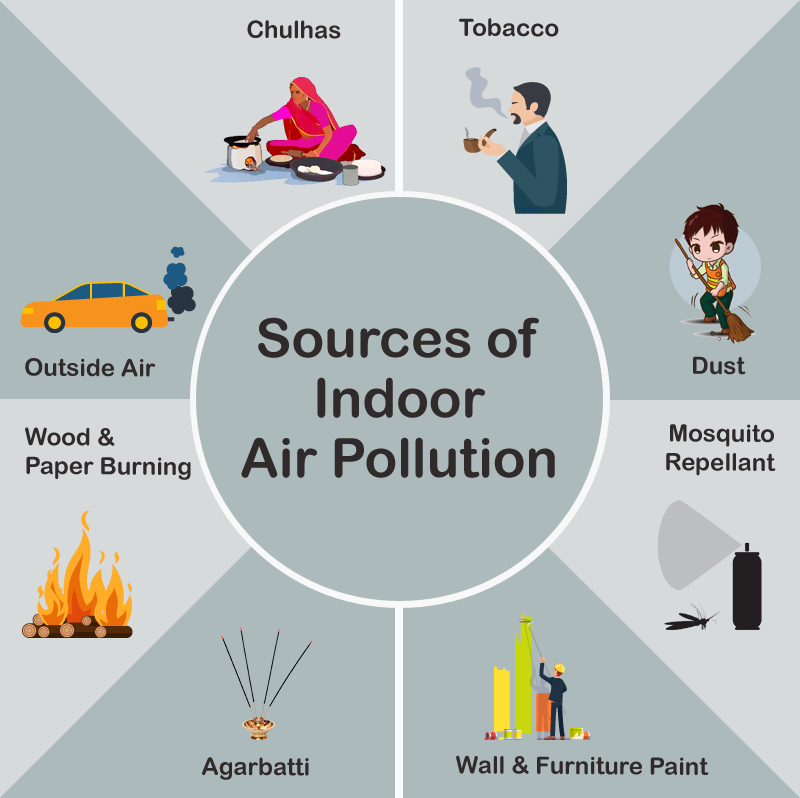
Pollution in Delhi-NCR
Poor air quality is due to various sources in & around Delhi-NCR:
- Vehicular emissions
- Construction and road dust
- Brick Kilns
- Coal fired power plants
- Stubble burning
- Industry emissions
- Bursting of crackers during Diwali
- Cold weather and Slow winds
According to IQAir World Air Quality Report 2019:
- Delhi was found to be world's most polluted capital two years in a row.
- During the study it was found that Delhi had 10 times the PM2.5 annual average levels considered safe by WHO guidelines.
- Delhi experienced the maximum number of days of poor air quality across all India.
